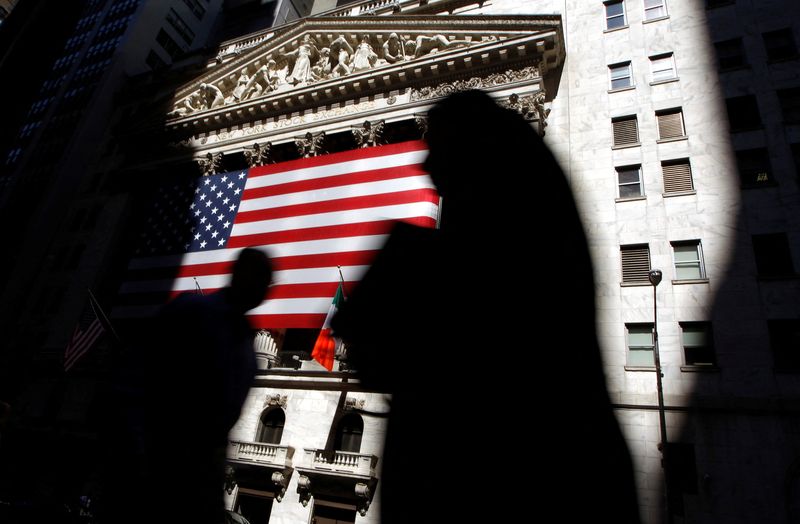Gold has topped $4,200. Here’s why Yardeni thinks the rally could go even higher.
Investing.com -- S&P 500 fell Tuesday following a wild swing lower in the close amid fresh U.S.-China trade war concerns after President Donald Trump criticized China for not buying U.S. soybeans.
At 4:00 ET (20:00 GMT), the benchmark S&P 500 fell 0.2%, the tech-heavy Nasdaq Composite fell 0.8%, and the blue-chip Dow Jones Industrial Average fell 0.8%.
Trump threatens China with cooking oil ban for not buying US soybeans
Trump said he was thinking about "terminating business" with China relating to cooking oil as Beijing refuses to buy U.S. soybeans.
"I believe that China purposefully not buying our Soybeans, and causing difficulty for our Soybean Farmers, is an Economically Hostile Act." Trump said on Truth Social on Tuesday.
The president said he believes that the U.S. "can easily produce Cooking Oil ourselves, we don’t need to purchase it from China."
The comments, which stoked fresh trade war concerns, come just days after the Trump threaten to hike tariffs on China imports by an additional 100%.
Powell signals quantitative tightening program nearing end
Fed chairman Jerome Powell said on Tuesday that the central bank is nearing the point where it would have to consider ending its quantitative tightening or bond reduction program.
The Fed chief also flagged risk that tariffs could trigger job losses if the Fed was too slow to cut interest rates.
The dovish remarks pushed bets on Fed cuts higher, sending Treasury yields sharply lower.
Bank earnings kick off earnings season
JPMorgan Chase posted profit and adjusted revenue that topped expectations, thanks to a recovery in dealmaking following a tariff-induced stalling earlier this year. The rebound in deals helped to boost fees at firm’s key investment banking unit by 16% versus a year earlier. Net revenue at the segment spiked by 17% to $19.88 billion, while net income increased 21% to $6.9 billion.
But shares in the largest U.S. lender declined as the amount of provisions for credit losses climbed. In a statement, JPMorgan CEO Jamie Dimon flagged "a heightened degree of uncertainty stemming from complex geopolitical conditions, tariffs and trade uncertainty, elevated asset prices and the risk of sticky inflation," as well as weakness in the U.S. jobs market.
Peer Wells Fargo reported better-than-expected third quarter earnings on Friday, with revenue growth across both consumer and commercial businesses driving shares up more than 3%. The banking giant posted earnings per share of $1.66 and revenue of $21.44 billion, exceeding analyst estimates of $21.16 billion.
Rivals Bank of America and Morgan Stanley are due to post their earnings on Wednesday.
Beyond banks, Johnson & Johnson reported third-quarter earnings and revenue above analyst expectations, and announced it plans to spin off its orthopaedics business. The pharmaceutical titan’s shares were down by 1.7%.
General Motors said it had incurred $1.6 billion in charges related to dialing back its electric vehicle production strategy, reflecting challenges faced by the U.S. auto industry as the federal government’s support for EVs shows indications of waning. Shares were hovering just above the flatline.
Gold’s touches new all-time peak
Gold prices notched a fresh record high above $4,100 per ounce, as Fed rate cut bets and renewed international trade woes spurred a rush into safe-haven assets, while silver also rallied to fresh peaks.
Spot gold traded 1% higher at $4,149.79 per ounce by 09:38 ET, after having touched an all-time peak of $4,190.67 earlier in the session. Gold futures were mostly steady at $4,132.85/oz.
The yellow metal has jumped by over 50% so far this year, and exceeded the $4,100 level for the first time ever on Monday.
Oil prices dropped, reversing earlier gains, as concerns swirled around whether the latest flare-up in trade tensions between the U.S. and China will dent global crude demand.
Meanwhile, global oil supply is anticipated to grow at a faster pace than previously estimated this year and a surplus is tipped to expand even further in 2026 thanks in part to increased OPEC+ output and "subdued" demand, according to a monthly report from the International Energy Agency.
In its Oil Market Report for October, the IEA said that world oil supply is on pace to rise by 3 million barrels per day to 106.1 million bpd in 2025. It had previously forecast a jump of 2.7 million bpd. Next year, supply is seen growing by a further 2.4 mbpd, the IEA added.
(Scott Kanowsky contributed to this report.)
